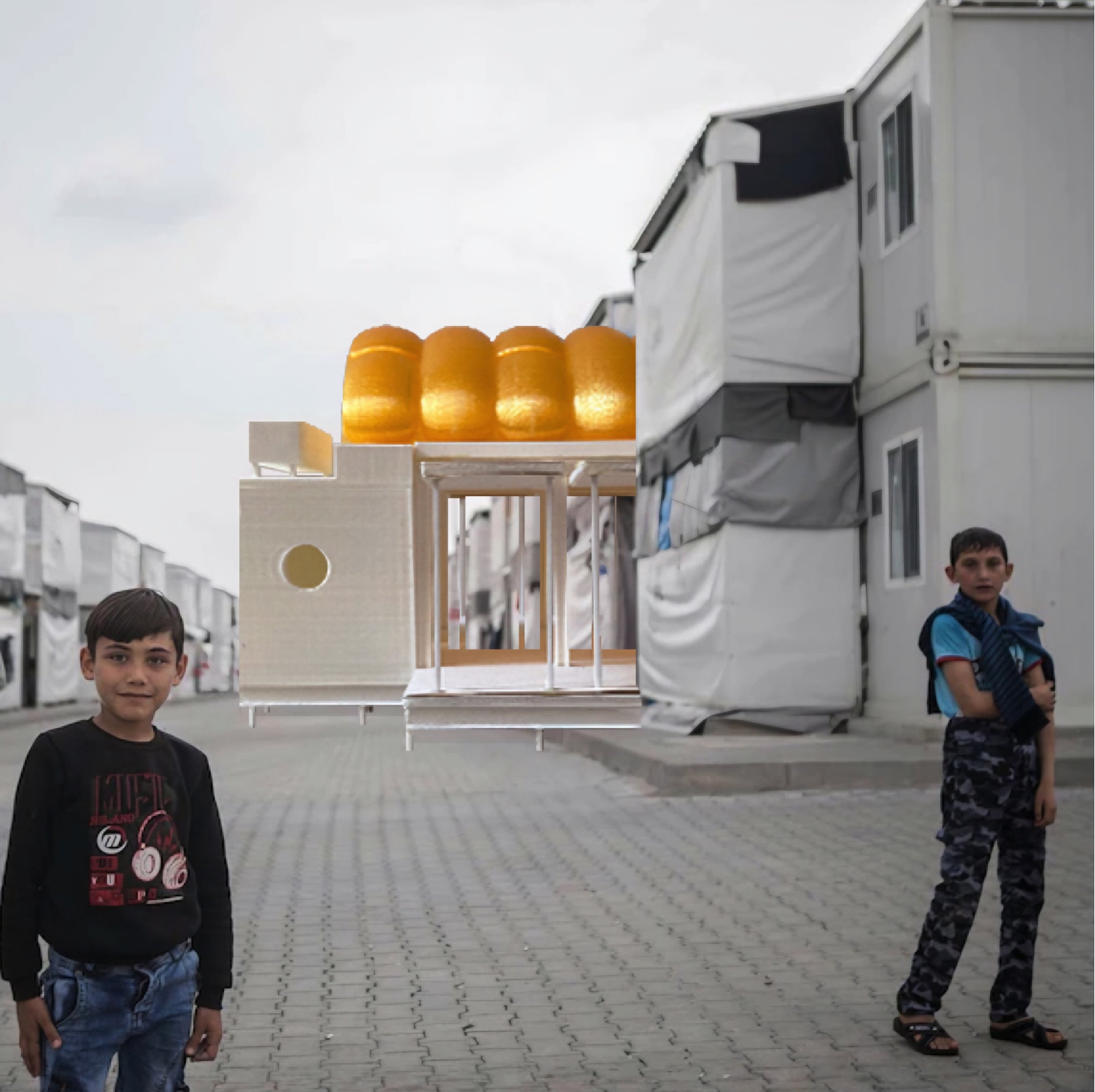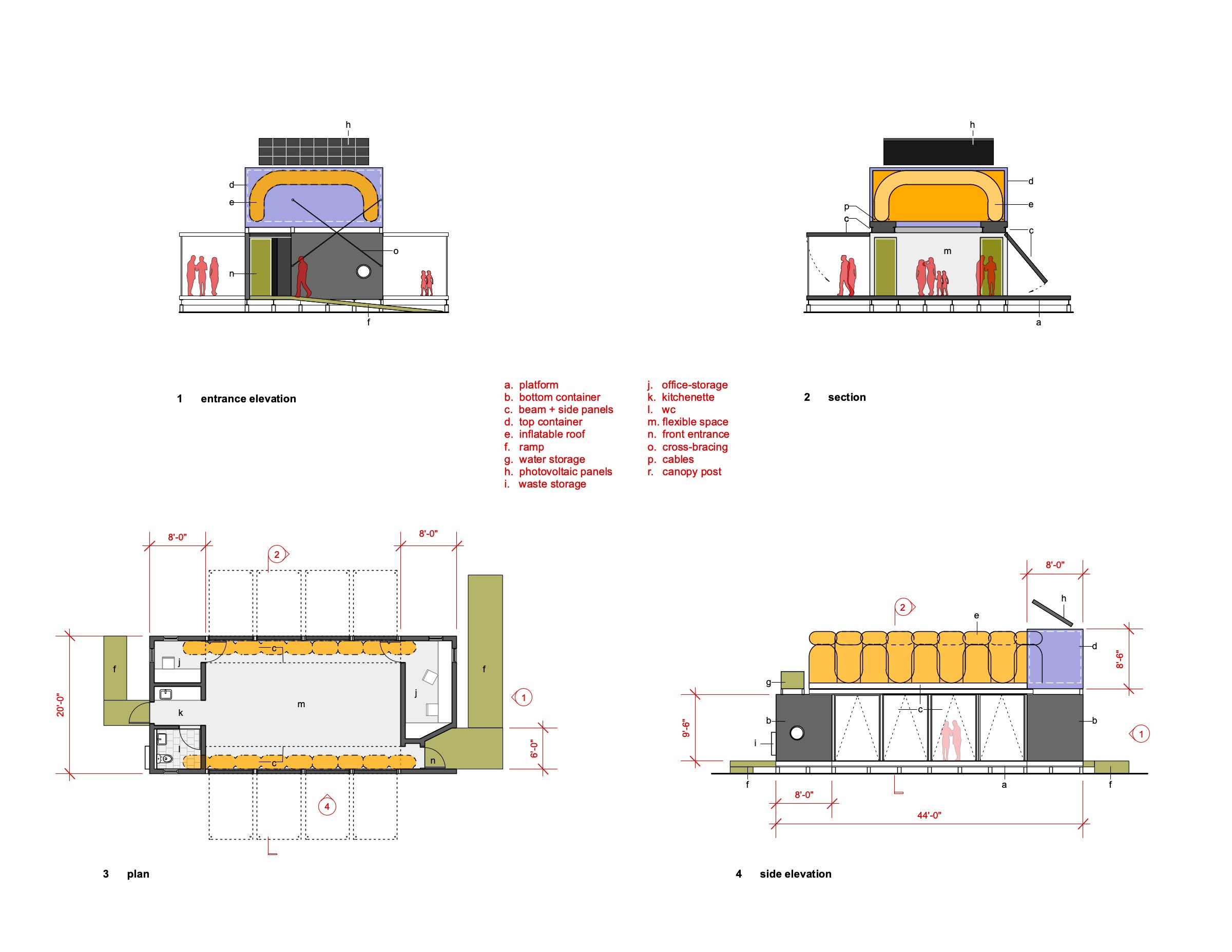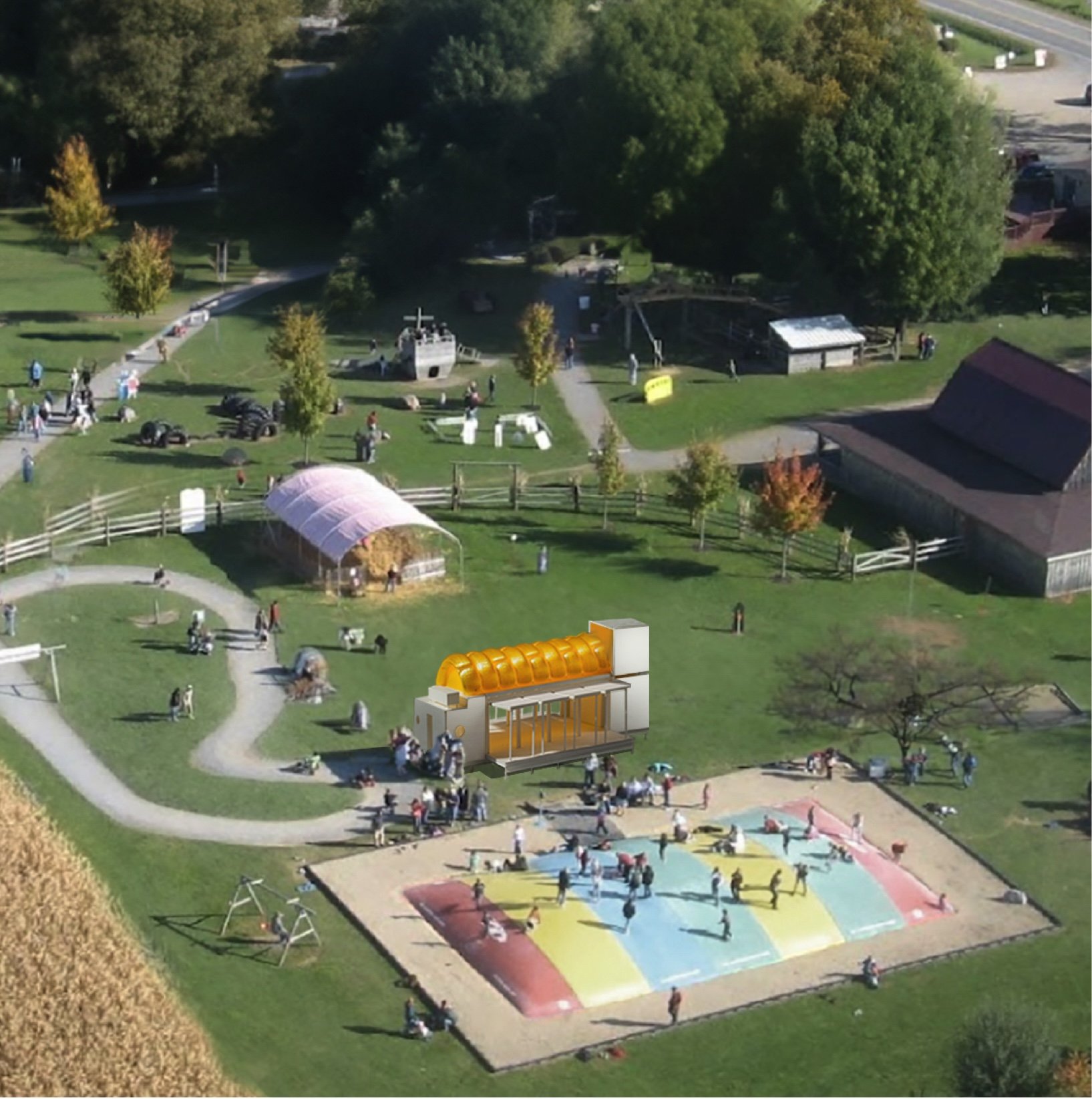
Deploy is a patent-pending design placing community at the center of architectural design which receive the national merit design award in 2024 from the Society of American Registered Architects (SARA). Flexible in form and use, it accommodates a diversity of programs for underserved communities and others who may lack spaces to gather for care, cultural connections, networking, workshops, or socializing. Early designs for Deploy were explored as an interim structure for Canvas Institute, an arts non-profit in Staten Island, while it sought funding for a permanent building. The design later significantly evolved through discussions with landscape architects, engineers, and municipalities working to create public spaces for displaced communities in the U.S. and Türkiye’s earthquake refugees.
Deploy / Anywhere


Deploy is easily transported, erected on site, disassembled, relocated, and stored. The construct has three primary components contained in volumes dimensioned for shipping by truck. Assembled by first placing two container-sized components at a distance from and parallel to each other on a platform, side walls with doors are then erected connecting these volumes, framing a central open space. The container volumes house functions that support the activities within the central space – an office, storage, bathroom, or kitchenette. A third volume is lifted on top of one platform-level volume from which an inflatable roof emerges, forming a roof over the central space (no secondary frame necessary). The double-shell filled with air (powered by two small fans) also acts as insulation. Top-hinged doors span the sides, which when open, extend the interior to the exterior.




Deploy acts as a beacon, inviting the public to interact, and uses design to enhance a community’s quality of life. It is well-suited to open spaces in urban, ex-urban, and rural areas – an affordable, year-round space where locals may access programs ranging from cultural events to zero waste workshops to emergency medical care (e.g., vaccinations). It can facilitate programming with entities such as arts organizations, agricultural education or workforce training centers, libraries, schools, parks, or farmers’ markets – complementing them as an adjacent or a satellite structure. It can support the outreach of municipal agencies (e.g., fire departments) as informational or emergency centers. Designed to engage collaborative efforts and knowledge exchange, it reveals architecture’s vital role in fostering communal resilience.


Project Credits
ACHA Team: Ali C. Höcek, Sarwat Yunus, Cynthia Corsiglia
